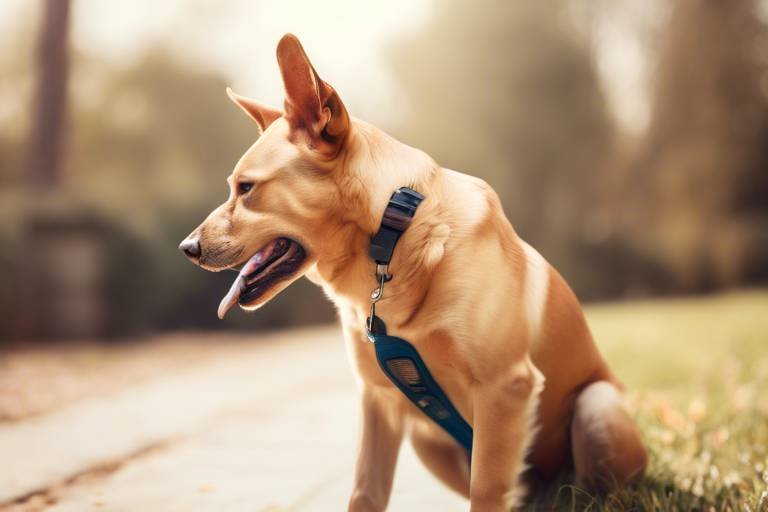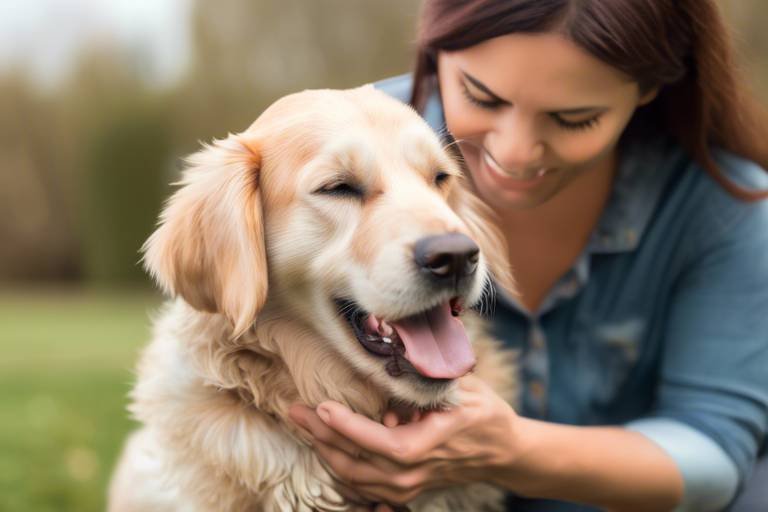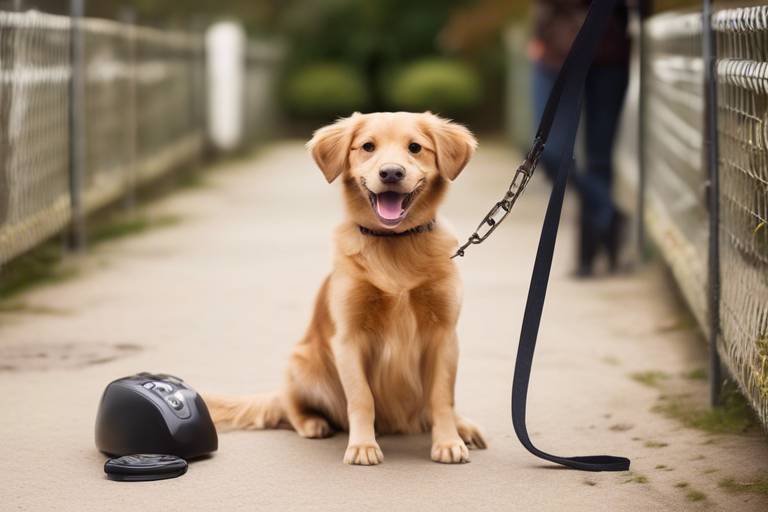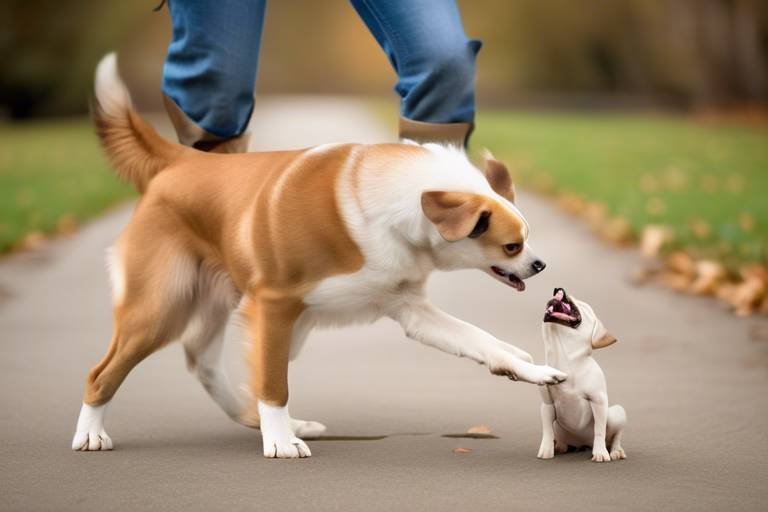Understanding Your Dog's Unique Learning Style
Have you ever noticed how your dog reacts differently to various training methods? Just like humans, dogs possess unique learning styles that can significantly impact their ability to understand commands and behaviors. By identifying and adapting to your dog's specific learning style, you can enhance your training effectiveness and strengthen the bond between you and your furry friend. This article dives deep into the fascinating world of canine learning, exploring the different styles and offering practical tips to help you communicate better with your pet.
Dogs are not one-size-fits-all learners. They exhibit a range of learning styles, including visual, auditory, and kinesthetic. Visual learners may respond better to gestures and body language, while auditory learners thrive on verbal cues and sounds. Kinesthetic learners, on the other hand, learn best through hands-on experiences. Understanding these styles is crucial for effective training. Imagine trying to teach a child math using only verbal instructions when they learn best through visual aids—frustrating, right? The same principle applies to our canine companions.
So, how do you identify your dog's learning style? Start by observing their reactions to different training techniques. Does your dog perk up at the sound of your voice, or do they respond better when you use hand signals? By paying attention to these cues, you can tailor your approach to suit their unique needs. This not only makes training more effective but also creates a more enjoyable experience for both of you.
To illustrate the importance of recognizing your dog's learning style, consider this: a dog that learns through observational learning—watching other dogs or humans—may pick up new commands simply by observing their peers. This type of learning is often seen in social settings, where dogs mimic the behaviors of others. In contrast, a dog that relies on trial-and-error learning might need more hands-on guidance to grasp new concepts. Understanding these differences can empower you to choose the right training methods that resonate with your pet.
In conclusion, recognizing and adapting to your dog's unique learning style is essential for effective training and communication. By doing so, you not only enhance their learning experience but also deepen the bond you share. Training your dog can be a fun and rewarding journey—one that leads to a well-behaved and happy companion. So, are you ready to unlock your dog's potential?
- What are the main learning styles of dogs? Dogs typically learn through visual, auditory, and kinesthetic styles.
- How can I identify my dog's learning style? Observe their reactions to different training methods and see which ones they respond to best.
- What is observational learning in dogs? It's when dogs learn by watching and mimicking the behaviors of other dogs or humans.
- Can I combine different training methods? Absolutely! Many dogs benefit from a combination of techniques tailored to their learning style.
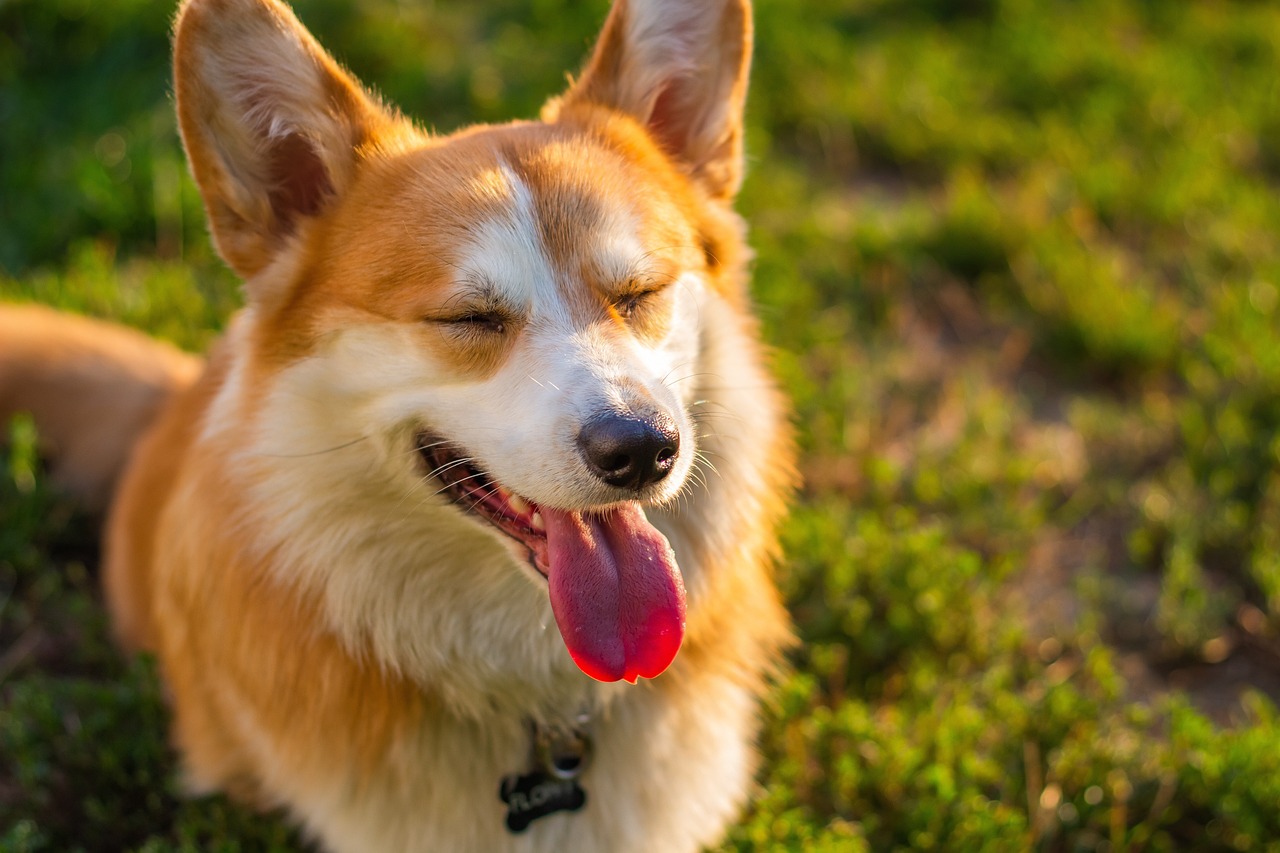
Types of Learning Styles
Just like humans, dogs have unique ways of learning that can significantly influence how they respond to training. Understanding these different learning styles is essential for any dog owner who wants to establish a strong bond with their furry friend while also ensuring effective communication. Dogs generally exhibit three primary learning styles: visual, auditory, and kinesthetic. Each of these styles has its own characteristics, and recognizing your dog's preferred method can make all the difference in the training process.
Visual learners, for instance, are dogs that thrive on seeing rather than just hearing commands. They respond best to body language, gestures, and visual cues. Imagine a dog watching intently as you perform a trick; they’re likely picking up on your movements and expressions, which can help them mimic your actions. To cater to these dogs, owners can incorporate visual aids, such as hand signals or even toys that catch their attention, to reinforce learning.
On the other hand, auditory learners are those that are more inclined to respond to sounds and verbal commands. These dogs are often the ones who perk up their ears at the sound of a treat bag rustling or the jingle of their leash. For these pups, using a variety of tones and vocal cues can enhance their learning experience. It’s like music to their ears! They thrive in environments where their owners use consistent verbal commands and sounds to indicate what behavior is desired.
Lastly, we have kinesthetic learners, who learn best through hands-on experience. These dogs are the action-oriented types who prefer to engage physically with their environment. They learn by doing, much like a child who understands math better when they can manipulate blocks rather than just listening to a teacher. Training techniques for kinesthetic learners often involve interactive play and physical activities, such as agility courses or fetch, which allow them to grasp concepts through movement.
To summarize, understanding your dog's learning style can be a game-changer in your training strategy. By observing how your dog reacts to different stimuli, you can tailor your approach to better suit their needs. Here’s a quick reference table outlining the three main learning styles:
| Learning Style | Characteristics | Training Techniques |
|---|---|---|
| Visual | Responds to body language and visual cues | Use gestures, hand signals, and visual aids |
| Auditory | Responds to sounds and verbal commands | Use varied tones, clickers, and consistent verbal cues |
| Kinesthetic | Learns through hands-on experience and movement | Engage in physical activities and interactive play |
By recognizing these styles, you can enhance your training effectiveness and create a more enjoyable experience for both you and your dog. Remember, the goal is not just to teach commands but to build a lasting relationship based on understanding and trust.

Identifying Your Dog's Learning Style
Recognizing your dog's preferred learning style is crucial for effective training. Just like humans, dogs have unique ways of absorbing and processing information. So, how can you identify what works best for your furry friend? The key lies in observation and experimentation. Start by trying out various training methods and watch how your dog responds. Does he seem more engaged when you use hand signals, or does he perk up at the sound of your voice? Each reaction can give you valuable insights into his learning style.
One effective way to assess your dog's learning style is to introduce different training scenarios. For instance, you might consider using visual cues, such as gestures or props, alongside verbal commands. Take note of which method elicits a quicker response. If your dog is quick to catch on to commands when you use visual aids, he might be a visual learner. Conversely, if he responds better to verbal cues, then auditory learning could be his forte.
Additionally, it's essential to consider your dog's personality. Some dogs are naturally more curious and eager to explore, while others may be more reserved and cautious. This personality trait can influence their learning style. A more adventurous dog may thrive in a kinesthetic learning environment where he can physically engage with the training process. On the other hand, a more reserved dog might prefer a quieter setting where he can focus on auditory or visual cues without distractions.
To further assist in identifying your dog's learning style, you can create a simple observation chart. This chart can help you track your dog's responses to different training techniques over time. For example, you could note down how quickly your dog learns a new command using various methods, such as:
| Training Method | Response Time | Notes |
|---|---|---|
| Visual Cues | 2 seconds | Responded quickly to gestures |
| Verbal Commands | 4 seconds | Listened but took longer to respond |
| Physical Interaction | 3 seconds | Engaged and excited |
By keeping track of these observations, you can better understand your dog's learning preferences and adapt your training methods accordingly. The ultimate goal is to create a training environment that resonates with your dog, making learning a fun and rewarding experience for both of you. Remember, the bond you share with your dog is built on trust and understanding, and recognizing their learning style is a significant step in strengthening that bond.
As you embark on this journey of discovery, don't hesitate to experiment with different techniques. Each dog is unique, and what works for one might not work for another. Be patient and open-minded, and soon you'll find the perfect approach that not only enhances your dog's learning but also enriches your relationship.
Observational Learning
Have you ever noticed how your dog seems to pick up on things just by watching? This is known as , and it's a powerful tool in the canine learning toolkit. Dogs are naturally curious creatures, and they often learn new commands and behaviors by observing their owners or other dogs. This innate ability can be harnessed to make training sessions more engaging and effective. For instance, if your dog sees another dog successfully performing a trick, they might be inspired to try it themselves. This mimicking behavior can lead to quicker learning outcomes and a deeper understanding of the tasks at hand.
To effectively utilize observational learning in your training routine, consider arranging playdates with other dogs or enrolling in group training classes. In these settings, your dog can observe their peers and learn through imitation. For example, if you’re teaching a new command like “sit,” having another dog perform the action can encourage your dog to follow suit. It’s like watching a friend ace a test; it gives them the confidence and the knowledge that they can do it too!
However, not all observational learning is created equal. Dogs tend to learn better from those they perceive as authority figures or those they trust. This means that your behavior and attitude during training sessions play a crucial role. If you’re calm and confident, your dog is more likely to mirror that attitude, making them more receptive to learning. Conversely, if you’re anxious or frustrated, your dog may become hesitant, which can hinder their learning process.
Additionally, it’s essential to understand that dogs are not just passive observers; they actively process what they see. This means they can differentiate between behaviors that are rewarded and those that are not. For instance, if they see another dog receiving praise for lying down, they may be more inclined to try that behavior themselves. This is where the importance of positive reinforcement comes into play. When your dog successfully mimics a behavior they’ve observed, rewarding them immediately with treats or praise reinforces that learning.
In summary, incorporating observational learning into your training regimen can significantly enhance your dog’s learning experience. By creating opportunities for your dog to watch and learn from others, while also ensuring that you provide a supportive and positive environment, you can foster a strong bond and improve communication between you and your furry friend. Remember, patience and consistency are key, and soon enough, you’ll see your dog thriving as they pick up new skills through the power of observation.
Social Learning in Dogs
Social learning in dogs is a fascinating phenomenon that highlights their ability to learn from observing others. Just like humans learn from their peers, dogs are keen observers of their surroundings and can pick up behaviors and commands by watching fellow canines or their human companions. This form of learning can be incredibly beneficial for dog owners looking to teach new tricks or modify behaviors. For instance, if your dog sees another dog sitting on command and receiving praise, they may be more inclined to replicate that behavior, hoping for the same reward.
One of the most compelling aspects of social learning is the concept of modeling. Dogs are naturally inclined to imitate actions that they see, especially from those they trust or feel bonded with. This means that if you want your dog to learn a specific behavior, such as fetching a ball, you can use another dog that already knows how to do it as a model. Watching another dog successfully perform the task can spark your dog's interest and motivate them to try it themselves.
Moreover, social interactions among dogs can enhance their learning experiences. Dogs that regularly engage with other dogs often learn through play, which can be a powerful teaching tool. For example, if one dog learns to roll over during playtime, others may quickly follow suit, mimicking the action in hopes of joining in on the fun. This kind of learning is not just limited to commands but can also include social behaviors, such as how to greet other dogs or respond to various situations.
However, it’s essential to create an environment conducive to social learning. Here are a few tips to enhance your dog's learning through social interactions:
- Arrange Playdates: Regularly schedule playdates with other dogs to encourage observational learning.
- Join Training Classes: Group training sessions can provide opportunities for your dog to learn from both humans and other dogs.
- Encourage Positive Reinforcement: Reward both your dog and the model dog when they exhibit desired behaviors to reinforce learning.
In conclusion, social learning is a powerful tool in a dog's training arsenal. By leveraging the natural tendency of dogs to learn from one another, you can enhance their training experience and foster a deeper bond between you and your furry friend. Remember, the more positive interactions your dog has with others, the more likely they are to pick up new skills and behaviors, making training a fun and rewarding journey for both of you.
Imitation vs. Trial and Error
When it comes to training your furry friend, understanding the difference between imitation and trial and error learning is crucial. Dogs, much like humans, have their unique ways of grasping new concepts, and recognizing these methods can significantly enhance your training approach. Imitation involves your dog observing another dog or a human performing a specific behavior and then replicating that action. This is particularly effective in social situations where dogs learn from each other, picking up cues and commands simply by watching. For instance, if one dog sits on command, others may follow suit just by witnessing this behavior. It’s like how we learn from our peers in school; we see someone else do something and think, “Hey, I can do that too!”
On the other hand, trial and error is a more individualistic approach. In this scenario, your dog engages in a behavior and learns from the outcomes of their actions. Imagine your dog trying to open a door by pawing at it; they might try several methods—scratching, nudging, or even barking—until they find the one that works. This method can be rewarding but may also lead to frustration if your dog doesn’t grasp the desired behavior quickly. It’s similar to how we might try different routes to reach a destination; sometimes we hit a dead end but eventually find the best path.
Both learning styles have their merits, and understanding which one resonates more with your dog can help you tailor your training sessions. For example, if you notice that your dog learns commands better by watching you or another dog, incorporating more demonstrations into your training could be beneficial. Conversely, if your dog seems to thrive on exploring and figuring things out independently, providing them with opportunities to experiment can foster their learning experience.
To summarize, here’s a quick comparison of the two learning styles:
| Learning Style | Description | Training Approach |
|---|---|---|
| Imitation | Learning by observing others | Use demonstrations and model behaviors |
| Trial and Error | Learning through exploration and outcomes | Encourage experimentation and problem-solving |
By recognizing whether your dog is more of an imitator or a trial-and-error learner, you can create a more effective and enjoyable training experience. Remember, patience is key, and with a little observation, you’ll discover the best ways to communicate and connect with your canine companion.
- How can I tell if my dog is an imitator?
Observe if your dog tends to copy behaviors from other dogs or people, especially during training sessions. - What are some signs of trial-and-error learning in dogs?
If your dog frequently tries different approaches to solve a problem, like opening a door or fetching a toy, they are likely a trial-and-error learner. - Can I use both methods in training?
Absolutely! Combining both imitation and trial-and-error techniques can create a well-rounded training approach that caters to your dog's unique learning style.
Visual Learning Techniques
When it comes to training your furry friend, understanding can be a game changer. Dogs are naturally observant creatures, and many of them grasp concepts more effectively when they can see them in action. Just like humans who learn better through pictures or demonstrations, dogs can respond positively to visual cues. Imagine teaching your dog to sit by showing them a hand signal while simultaneously saying the command. This combination not only reinforces the command but also caters to your dog's visual learning style.
One effective method for visual learners is the use of gestures and body language. Dogs are highly perceptive to human movements. For instance, when you want your dog to come, instead of just calling out, try extending your arm towards them in a welcoming gesture. This visual cue can often prompt your dog to respond faster than just the verbal command alone. Additionally, maintaining consistent body language during training sessions helps your dog associate specific movements with commands, creating a clearer understanding of what you expect from them.
Moreover, incorporating visual aids can significantly enhance the learning process. Items like colored cones or toys can serve as markers during training exercises. For example, if you’re teaching your dog to fetch, placing a brightly colored ball in a specific spot can help them visualize where to go. This not only makes training more engaging but also allows your dog to see and understand their objectives clearly.
Another aspect to consider is the use of training videos. Watching other dogs perform tasks can stimulate your dog’s interest and motivation. You can find numerous videos online showcasing dogs learning various tricks. By allowing your dog to observe these videos, you can tap into their natural tendency to learn through observation. It’s like giving them a sneak peek into what they can achieve!
Lastly, remember that consistency and repetition are key. Visual learners thrive on routine; the more they see the same commands paired with the same visual cues, the better they will understand and respond. So, whether you’re using hand signals, body language, or visual aids, ensure that you practice regularly. Just like a child learning to read, the more exposure they have to the letters and words, the more fluent they become. In the same way, your dog will become more proficient in following commands when trained with visual techniques.
- What are the signs that my dog is a visual learner? If your dog seems to respond better to hand signals or gestures rather than verbal commands, they may be a visual learner.
- Can I combine different learning styles in training? Absolutely! Many dogs benefit from a mixed approach that includes visual, auditory, and kinesthetic methods.
- How long should I spend on visual training techniques? Short, frequent sessions of about 5-10 minutes are usually most effective, as dogs have limited attention spans.
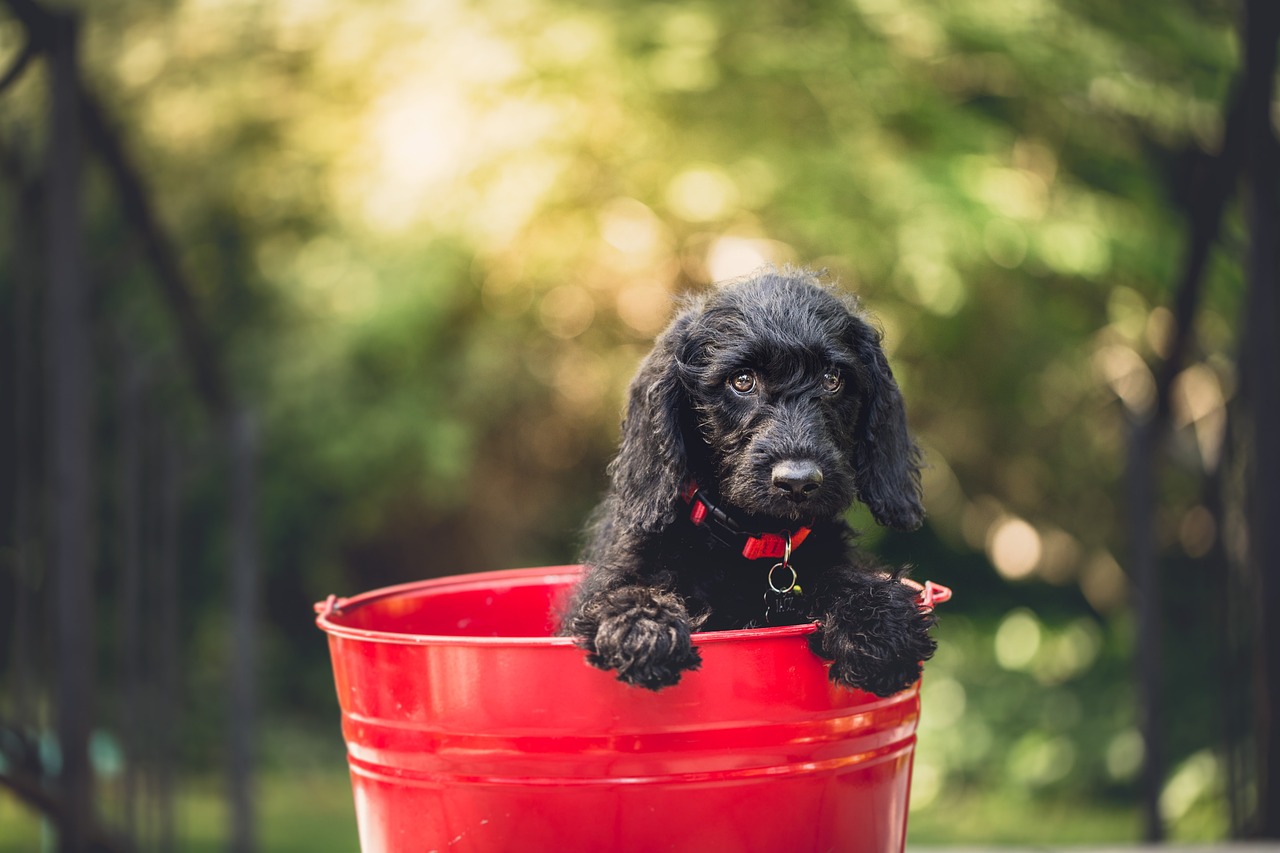
Auditory Learning Strategies
When it comes to training your furry friend, understanding their learning style is crucial, especially if they are an auditory learner. These dogs thrive on sound, responding best to verbal commands and the nuances of your voice. Imagine a child learning to speak; they pick up words and tones from their parents. Similarly, your dog is constantly tuning into your vocal cues, making it essential to use this to your advantage. By focusing on auditory learning strategies, you can enhance your dog's training experience and strengthen your bond.
One of the most effective methods for auditory learners is the use of verbal commands. Consistency is key here. Choose simple, distinct words for commands like "sit," "stay," or "come," and use them consistently. This repetition helps your dog associate specific sounds with actions. Think of it as a musical note that, once learned, can be played again and again. The more you practice, the clearer the melody becomes. Additionally, varying your tone of voice can significantly impact your dog's response. A cheerful tone can encourage your dog to perform a command, while a firm tone can signal that they need to pay attention.
Another fantastic auditory strategy is clicker training. This method involves using a small device that makes a clicking sound to mark desired behaviors. The click serves as a clear signal that your dog has done something right, followed immediately by a treat. This creates a positive reinforcement loop that helps your dog understand what behavior is expected. Implementing clicker training can be as straightforward as:
| Step | Description |
|---|---|
| 1 | Get a clicker and some tasty treats. |
| 2 | Click the device as soon as your dog performs the desired action. |
| 3 | Follow the click with a treat to reinforce the behavior. |
Moreover, incorporating music and sounds into your training sessions can also be beneficial. Certain types of music can create a calming environment, which is particularly useful for anxious dogs. Research suggests that classical music can help reduce stress in dogs, making them more receptive to learning. You might try playing soft instrumental music during training sessions to see how your dog responds. Just as we humans find comfort in our favorite songs, dogs can also find solace and focus in soothing sounds.
Lastly, don’t forget to create a positive auditory environment. This means minimizing distractions during training sessions. Loud noises, such as traffic or loud music, can hinder your dog's ability to focus on your commands. Instead, choose a quiet space where your dog can hear your voice clearly. Think of it as setting the stage for a concert; the better the acoustics, the more your audience will enjoy the performance.
In conclusion, by embracing these auditory learning strategies, you can tailor your training methods to suit your dog's unique needs. Remember, dogs are not just pets; they are family members who deserve the best training possible. With patience, consistency, and a little creativity, you'll unlock your dog's full potential, making every training session a joyful experience for both of you.
- What are the signs that my dog is an auditory learner? Look for signs such as responsiveness to your voice, following commands more easily when spoken, and showing excitement when hearing specific sounds or cues.
- Can I combine different learning strategies? Absolutely! Many dogs benefit from a mix of visual, auditory, and kinesthetic methods. Experiment to find the best combination for your dog.
- How long should I train my dog each day? Short, frequent training sessions of about 5-10 minutes are often more effective than longer sessions. This keeps your dog engaged without overwhelming them.
Using Clicker Training
Clicker training is a powerful method that leverages auditory learning to help dogs understand and respond to commands effectively. At its core, clicker training is based on the principles of operant conditioning, where a specific sound, the click, is used to mark the exact moment a dog performs a desired behavior. This immediate feedback helps the dog associate the action with a positive outcome, making it easier for them to learn. But how do you get started with this technique? Let's break it down!
First, you’ll need a clicker, which is a small handheld device that makes a distinct sound when pressed. The beauty of the clicker lies in its simplicity and precision; it allows you to communicate with your dog in a way that is clear and unmistakable. To begin, it's essential to establish a strong association between the click sound and a reward, typically a treat. Start by clicking the device and immediately giving your dog a treat. Repeat this several times until your dog begins to look for a reward every time they hear the click.
Once your dog understands that the click means a treat is coming, you can start introducing commands. For example, if you want to teach your dog to sit, wait for them to naturally sit down. The moment their bottom touches the ground, click the clicker and reward them with a treat. This process creates a powerful connection in your dog’s mind, linking the action of sitting with the sound of the click and the subsequent treat. Over time, your dog will begin to associate the command "sit" with the action itself, making it easier to reinforce the behavior.
Another fantastic aspect of clicker training is its versatility. You can use it for various behaviors, from basic commands like "stay" and "come" to more complex tricks like "roll over" or "play dead." The key is consistency. Always click at the precise moment your dog performs the desired action and follow up with a reward. This consistency helps solidify the learning process.
Moreover, clicker training can be a fun bonding experience for both you and your dog. It encourages interaction, enhances communication, and builds trust. As you progress, you might find that your dog is not only learning commands but also developing a deeper understanding of your cues and intentions. This mutual understanding can lead to a more harmonious relationship.
However, it’s important to note that while clicker training is effective, it should be used alongside other training methods. For instance, verbal praise and physical affection are just as important in reinforcing good behavior. The combination of auditory signals, like the clicker, with your voice and affection creates a well-rounded training approach. Remember, every dog is unique, and what works for one might not work for another.
In summary, clicker training is an excellent tool for enhancing your dog's learning experience through auditory cues. By establishing clear communication and rewarding desired behaviors, you can significantly improve your training outcomes. So, grab that clicker and get started—your furry friend is waiting to learn!
Incorporating Music and Sounds
Music and sounds can play a surprisingly effective role in enhancing your dog's training experience. Just like humans, dogs have unique preferences when it comes to auditory stimuli. Some dogs may respond positively to soothing melodies, while others might perk up at the sound of a specific tone or command. The key is to experiment and observe how your furry friend reacts to different sounds. Using music as a backdrop during training sessions can create a calm environment that helps your dog focus. Think of it as setting the mood for a great dinner party—if the ambiance is right, everyone enjoys themselves more!
One effective strategy is to incorporate classical music into your training routine. Research has shown that classical music can reduce anxiety levels in dogs, making them more receptive to learning. For instance, you might play a soft piano piece while teaching your dog new commands. This approach not only calms their nerves but also creates a positive association with the learning process. Imagine your dog sitting attentively, ears perked up, as the gentle music plays in the background. It’s a win-win situation!
Additionally, certain sounds can be used as cues for specific behaviors. For example, using a consistent tone for commands like "sit" or "stay" can help reinforce your dog's understanding of what you expect from them. Over time, your dog will begin to associate that sound with the action, making it easier for them to respond correctly. You could even create a little "sound library" of different tones and cues that you use regularly. This way, training becomes a fun and engaging experience, almost like a game of auditory hide-and-seek!
Here’s a quick table summarizing some effective sounds and their potential impact on dog training:
| Sound Type | Purpose | Example |
|---|---|---|
| Classical Music | Reduces anxiety and promotes focus | Beethoven’s Moonlight Sonata |
| Verbal Cues | Reinforces commands and behaviors | “Sit” in a high-pitched tone |
| Clicker Sound | Marks desired behaviors | Clicker device sound |
| Upbeat Music | Encourages playfulness and energy | Happy pop songs |
Lastly, don’t underestimate the power of sound in creating a positive training environment. You might consider using a playlist specifically designed for dogs, which can include calming music, nature sounds, or even recordings of other dogs barking. The idea is to make training sessions enjoyable and less stressful for your pet. Just imagine your dog wagging their tail and looking up at you with those big, eager eyes, ready to learn and engage. That’s the magic of incorporating music and sounds into your training routine!
- Can all dogs benefit from music during training? Yes, most dogs can benefit from music, but each dog has its own preferences. It's essential to observe your dog's reactions to different types of sounds.
- What type of music is best for calming my dog? Classical music is often recommended for its calming effects. However, experimenting with other genres can also yield positive results.
- How can I tell if my dog prefers auditory learning? If your dog responds well to verbal commands or seems engaged when you use sounds, they may be an auditory learner.
Frequently Asked Questions
- What are the different learning styles in dogs?
Dogs primarily exhibit three learning styles: visual, auditory, and kinesthetic. Understanding these styles can help you tailor your training methods to better suit your dog's unique way of learning.
- How can I identify my dog's learning style?
To identify your dog's learning style, pay attention to how they respond to various training techniques. For instance, do they seem to understand better with visual cues, or do they respond more to verbal commands? Observing their interactions and preferences during training can provide valuable insights.
- What is observational learning in dogs?
Observational learning occurs when dogs learn by watching others, whether it's fellow dogs or humans. This method can be particularly effective in teaching new commands or behaviors, as dogs often mimic what they see.
- Can social interactions enhance my dog's learning?
Absolutely! Social learning emphasizes the importance of interactions with other dogs. When dogs engage with their peers, they can pick up new behaviors and skills, making training more effective and enjoyable.
- What is the difference between imitation and trial-and-error learning?
Imitation involves copying behaviors observed in others, while trial-and-error learning is about experimenting to find out what works. Understanding this distinction can help you choose the right training approach based on your dog's natural tendencies.
- How can I train a visual learner effectively?
For dogs that learn best visually, you can enhance training by using gestures, body language, and visual aids. Incorporating these elements can significantly improve their understanding and retention of commands.
- What strategies work for auditory learners?
Auditory learners thrive on verbal commands and sounds. Using varied voice tones, cues, and even clicker training can reinforce their learning and help them grasp new behaviors more quickly.
- How does clicker training benefit my dog?
Clicker training is an effective auditory method that reinforces positive behaviors through sound. When your dog performs a desired action, a clicker sound can mark that moment, making it clear what behavior is being rewarded.
- Can music help in training my dog?
Yes! Certain sounds and music can create a positive atmosphere that enhances learning for auditory dogs. Experimenting with different sounds can help you find what resonates best with your furry friend.

